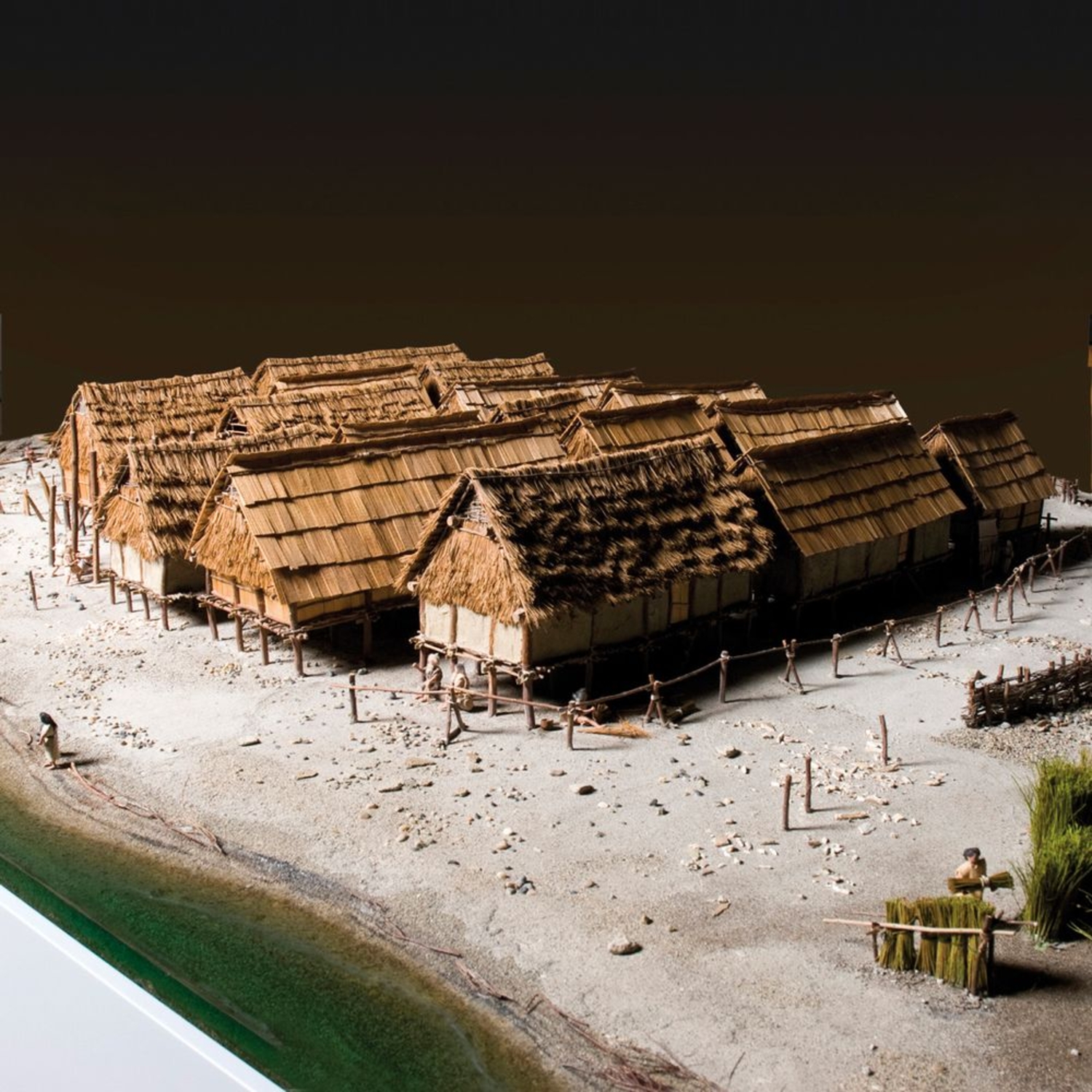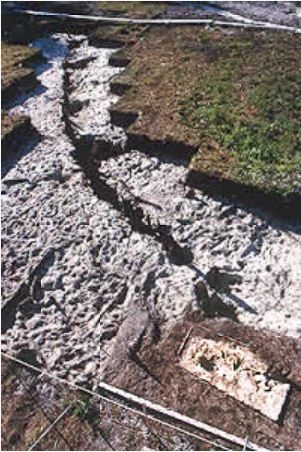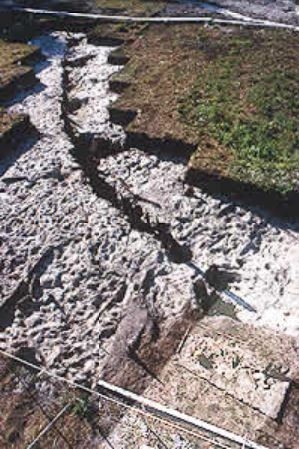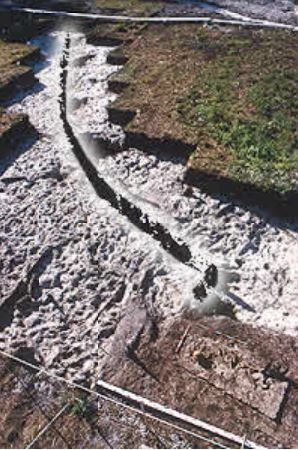- Home
- The village
- What about the dead ?
- Bones, but no graves
Currently, there are no graves associated with these lakeshore Neolithic villages.
However, this is the case with practically all the wetland villages northwest of the Alps. The dominant theory is that most of the dead were not buried.
Several bones kept in memory of the deceased
If we examine the domestic waste areas near the houses or along the palisades, we find a few unconnected bones. At Chalain and Clairvaux, there are hardly more than a dozen human bones in all. These include several isolated skulls, one or two mandibles, a few vertebrae and long bones, and one skull fragment that was cut, polished and pierced in order to make a pendant.
We are not dealing here with a normal funerary ritual in which the dead were left on the ground within the boundary of the village. Rather this is a selection of several anatomical pieces kept in the house in temporary memory of a particular person. Neither age nor sex determined the choice of bones.
Pierced and polished skull.
Jura Archaeological Museum, Lons-le-Saunier.
Photography: P. Lopinet.
An unexplained ritual
One case should be pointed out; at Chalain 19, just above the layer of abandonment of the village in the 30th century BCE, the body of a child was laid on the wooden trackway at the entryway in the palisade.
The body, laying on its left side in fetal position, was covered with a hide that was fastened to the ground to keep the body in place during period of flooding. This is an isolated case. Was it a possible ritual for enclosing the village space? The theory cannot really be defended.
Skeleton of a child.
Chalain 19, 30th century BCE
Location of the Skeleton of a child.
Chalain 19, 30th century BCE.
Location of the wooden trackway.
Chalain 19, 30th century BCE.
Location of the palisade.
Chalain 19, 30th century BCE.





